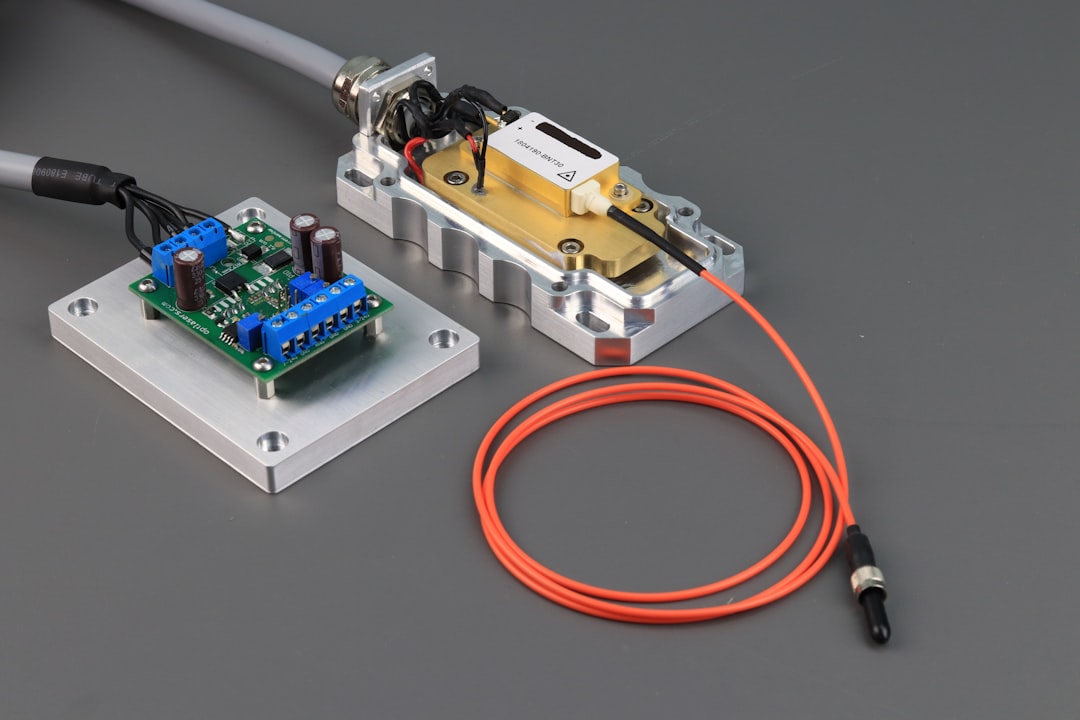Laser hair removal is a popular cosmetic procedure that uses a concentrated beam of light (laser) to remove unwanted hair. The laser emits a light that is absorbed by the pigment (melanin) in the hair. This light energy is converted to heat, which damages the hair follicles, inhibiting future hair growth. The procedure is commonly used to remove hair from the face, legs, arms, underarms, bikini line, and other areas.
Laser hair removal is a non-invasive procedure that targets individual hair follicles, leaving the surrounding skin undamaged. It is important to note that laser hair removal is not a permanent solution for hair removal, but it does provide long-term reduction in hair growth. Multiple sessions are usually required to achieve the best results, as hair grows in different stages and the laser is most effective at targeting hair in the active growth phase.
Key Takeaways
- Laser hair removal uses concentrated light to target and destroy hair follicles, resulting in long-term hair reduction.
- The process works by targeting the pigment in the hair follicle, heating it up and damaging the follicle to inhibit future hair growth.
- Factors such as hair color, skin color, and hair thickness can affect the success of laser hair removal treatment.
- Potential side effects of laser hair removal include redness, swelling, and skin irritation, but these are usually temporary.
- Laser hair removal is more effective and longer-lasting than traditional hair removal methods such as shaving, waxing, and plucking.
- It is important to choose a qualified and experienced professional for laser hair removal to ensure safe and effective treatment.
- The future of laser hair removal may involve advancements in technology and innovations to make the treatment more efficient and accessible.
The Science Behind How Laser Hair Removal Works
The science behind laser hair removal lies in the principle of selective photothermolysis. This process involves targeting specific tissues with a specific wavelength of light, while minimizing damage to surrounding tissues. In the case of laser hair removal, the melanin in the hair follicle absorbs the light energy from the laser, which is then converted to heat. This heat damages the hair follicle, inhibiting future hair growth.
The success of laser hair removal is dependent on the contrast between the color of the hair and the color of the surrounding skin. This is why individuals with dark hair and light skin tend to have the best results with laser hair removal, as there is a greater contrast for the laser to target. However, advancements in technology have made it possible for individuals with darker skin tones to also undergo laser hair removal, as newer lasers are able to target the melanin in the hair follicle while minimizing damage to the surrounding skin.
Factors That Affect the Success of Laser Hair Removal
Several factors can affect the success of laser hair removal, including skin color, hair color, and hair thickness. As mentioned earlier, individuals with lighter skin and darker hair tend to have the best results with laser hair removal due to the greater contrast between the hair and skin. However, advancements in technology have made it possible for individuals with darker skin tones to also undergo laser hair removal.
The thickness of the hair also plays a role in the success of laser hair removal. Coarse, dark hair responds best to laser treatment, while fine, light-colored hair may be more difficult to target. Additionally, the location of the hair on the body can also affect the success of laser hair removal. Areas with thinner skin, such as the face and bikini line, may be more sensitive and require special considerations during treatment.
Potential Side Effects and Risks of Laser Hair Removal
| Side Effect | Description |
|---|---|
| Redness and Swelling | Common side effects that usually subside within a few hours |
| Skin Discoloration | Possible temporary or permanent changes in skin color |
| Blisters and Burns | Rare but possible, especially if the procedure is not performed correctly |
| Scarring | Possible in rare cases, especially for individuals with sensitive skin |
| Eye Injury | Risk of eye damage if proper eye protection is not used during the procedure |
While laser hair removal is generally considered safe, there are potential side effects and risks associated with the procedure. Common side effects include temporary redness and swelling of the treated area, which typically subside within a few hours. Some individuals may also experience temporary pigment changes or blistering of the skin.
More serious side effects are rare but can include scarring, burns, and changes in skin texture. These risks are minimized when the procedure is performed by a qualified professional using appropriate equipment and techniques. It is important for individuals considering laser hair removal to thoroughly research and choose a reputable provider to minimize the risk of potential side effects.
Comparing Laser Hair Removal to Other Hair Removal Methods
Laser hair removal offers several advantages over traditional hair removal methods such as shaving, waxing, and plucking. Unlike these methods, which provide only temporary results, laser hair removal offers long-term reduction in hair growth. Additionally, laser hair removal can target large areas of the body quickly and effectively, making it a convenient option for individuals looking to reduce unwanted hair.
While laser hair removal may require multiple sessions to achieve optimal results, many individuals find that the long-term reduction in hair growth is worth the investment. Furthermore, laser hair removal can be less painful than traditional methods such as waxing, which can cause discomfort and irritation to the skin.
The Importance of Choosing a Qualified Professional for Laser Hair Removal

Choosing a qualified professional for laser hair removal is crucial for ensuring safe and effective treatment. A qualified professional will have the necessary training and experience to perform the procedure safely, minimizing the risk of potential side effects and complications. Additionally, a reputable provider will use FDA-approved equipment and follow strict safety protocols to ensure the best possible outcome for their patients.
It is important for individuals considering laser hair removal to research potential providers thoroughly and ask questions about their experience, training, and safety protocols. Reading reviews and seeking recommendations from trusted sources can also help individuals make an informed decision when choosing a provider for laser hair removal.
The Future of Laser Hair Removal: Advancements and Innovations
Advancements in technology continue to improve the effectiveness and safety of laser hair removal. Newer lasers are able to target a wider range of skin tones and hair colors, making it possible for more individuals to benefit from laser hair removal. Additionally, advancements in cooling techniques have made the procedure more comfortable for patients, reducing discomfort during treatment.
Innovations in laser technology have also led to faster treatment times and reduced downtime for patients. Some newer lasers are able to target larger areas of the body in less time, making it a more convenient option for individuals with busy lifestyles. As technology continues to advance, it is likely that laser hair removal will become an even more accessible and effective option for individuals looking to reduce unwanted hair growth.
If you’re curious about the science behind laser hair removal and how it works, you’ll find a comprehensive explanation in the article “DiolazeXL Laser Hair Removal: Glo Aesthetics Review” on InLaserHairRemoval.com. This article delves into the technology and process behind laser hair removal, providing valuable insights for anyone considering this popular treatment. Whether you’re interested in the latest advancements in beauty technology or seeking effective numbing creams for skin procedures, InLaserHairRemoval.com offers a wealth of information to help you make informed decisions.
FAQs
What is laser hair removal?
Laser hair removal is a cosmetic procedure that uses a concentrated beam of light (laser) to remove unwanted hair. The laser targets the pigment in the hair follicles, heating and damaging them to inhibit future hair growth.
How does laser hair removal work?
During laser hair removal, the pigment in the hair follicles absorbs the laser light, which then converts to heat. This heat damages the hair follicle, inhibiting future hair growth. Multiple sessions are typically required to achieve long-term hair reduction.
Is laser hair removal permanent?
Laser hair removal can lead to long-term hair reduction, but it is not always permanent. Some hair may grow back, but it is often finer and lighter in color. Maintenance sessions may be needed to sustain the results.
What areas of the body can be treated with laser hair removal?
Laser hair removal can be used to treat unwanted hair on various areas of the body, including the face, legs, arms, underarms, bikini line, and back. It is important to consult with a qualified professional to determine the best approach for each specific area.
Is laser hair removal safe?
When performed by a qualified and experienced professional, laser hair removal is generally considered safe. However, there are potential risks and side effects, such as skin irritation, redness, and changes in skin pigmentation. It is important to discuss any concerns with a healthcare provider before undergoing the procedure.





